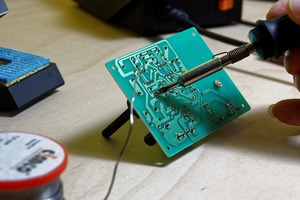Blog Information
- Posted By : Victor Veasley
- Posted On : Aug 05, 2024
- Views : 119
- Category : General
- Description : This blog explores some of the cutting-edge techniques used in high-voltage transformer design.
- Location : United States
Overview
Transformer design plays a pivotal role in ensuring the efficient transmission and distribution of electrical power, especially in high-voltage applications. High-voltage transformers are essential for stepping up voltage levels for long-distance transmission and stepping down voltage for safe distribution. Designing transformers for these applications requires advanced techniques to ensure reliability, efficiency, and safety. This blog explores some of the cutting-edge techniques used in high-voltage transformer design.
Enhanced Insulation Systems
High-voltage transformers require robust insulation systems to withstand the electrical stress associated with high voltage levels. Advanced insulation materials and configurations are critical in preventing dielectric breakdown and ensuring longevity. Using high-quality materials like epoxy resin and pressboard enhances the transformer's ability to handle high voltages. These materials offer excellent dielectric properties and thermal stability. Combining solid, liquid, and gas insulation provides multiple layers of protection, reducing the risk of breakdown. For example, paper-oil insulation systems are commonly used for their superior performance in high-voltage conditions.
Optimized Core Design
The core of a high-voltage transformer is fundamental to its efficiency and performance. Advanced core design techniques help minimize core losses and improve the overall efficiency of the transformer. Utilizing materials like amorphous steel and nanocrystalline alloys reduces core losses due to their superior magnetic properties. These materials provide low coercivity and high permeability, which are essential for efficient operation. Designing the core with optimal geometry, such as using step-lap joints and reducing air gaps, enhances the magnetic flux distribution and minimizes losses. Advanced computer-aided design (CAD) tools can be used to simulate and optimize core geometry.
Advanced Cooling Techniques
Effective thermal management is crucial for high-voltage transformers to prevent overheating and ensure reliable operation. Advanced cooling techniques help dissipate heat efficiently, maintaining optimal operating temperatures. Incorporating fans and blowers to circulate air around the transformer components enhances heat dissipation. This method is particularly effective in outdoor and enclosed environments. Using high-grade insulating oil to immerse transformer windings and core helps transfer heat away from the components. This method, combined with radiators and heat exchangers, provides efficient cooling for high-voltage applications.
Dielectric Fluid Innovations
Dielectric fluids play a significant role in insulating and cooling high-voltage transformers. Innovations in dielectric fluid technology enhance the transformer's performance and environmental sustainability. Synthetic ester fluids offer superior thermal stability and biodegradability compared to traditional mineral oils. They provide excellent dielectric properties and are environmentally friendly, reducing the risk of soil and water contamination. Incorporating nanoparticles into dielectric fluids improves thermal conductivity and dielectric strength. Nanofluids enhance heat transfer and provide better insulation, contributing to the reliability and efficiency of high-voltage transformers.
Smart Monitoring and Control
Integrating smart monitoring and control systems into transformer design allows for real-time data collection and analysis, enhancing operational reliability and maintenance efficiency. Installing sensors to monitor critical parameters like temperature and humidity helps detect potential issues early. Real-time data allows for proactive maintenance and prevents catastrophic failures. Creating digital twins of high-voltage transformers enables virtual simulations of their performance under various conditions. This technology helps in predicting failures and optimizing maintenance schedules, ensuring reliable operation.
Surge Protection and Safety Features
High-voltage transformers are susceptible to voltage surges caused by lightning strikes and switching operations. Advanced surge protection and safety features are essential to safeguard the transformer and the connected grid. Installing high-performance surge arresters diverts excess voltage to the ground, protecting the transformer from overvoltage conditions. These devices are designed to handle the high energy levels associated with surges. Implementing protective relays that monitor electrical parameters and trigger protective actions during abnormal conditions ensures the transformer's safety. These relays can isolate faulty sections of the grid, preventing damage and maintaining system stability.
Conclusion
Advanced transformer design techniques are essential for meeting the demands of high-voltage applications. By focusing on enhanced insulation systems, optimized core design, advanced cooling techniques, innovative dielectric fluids, smart monitoring, and robust surge protection, engineers can design transformers that are reliable, efficient, and safe. As the need for high-voltage power transmission grows, these advanced techniques will play a crucial role in ensuring the stability and sustainability of our electrical power systems. Through continuous innovation and adherence to best practices, transformer design will continue to evolve, supporting the ever-increasing global energy demands.
